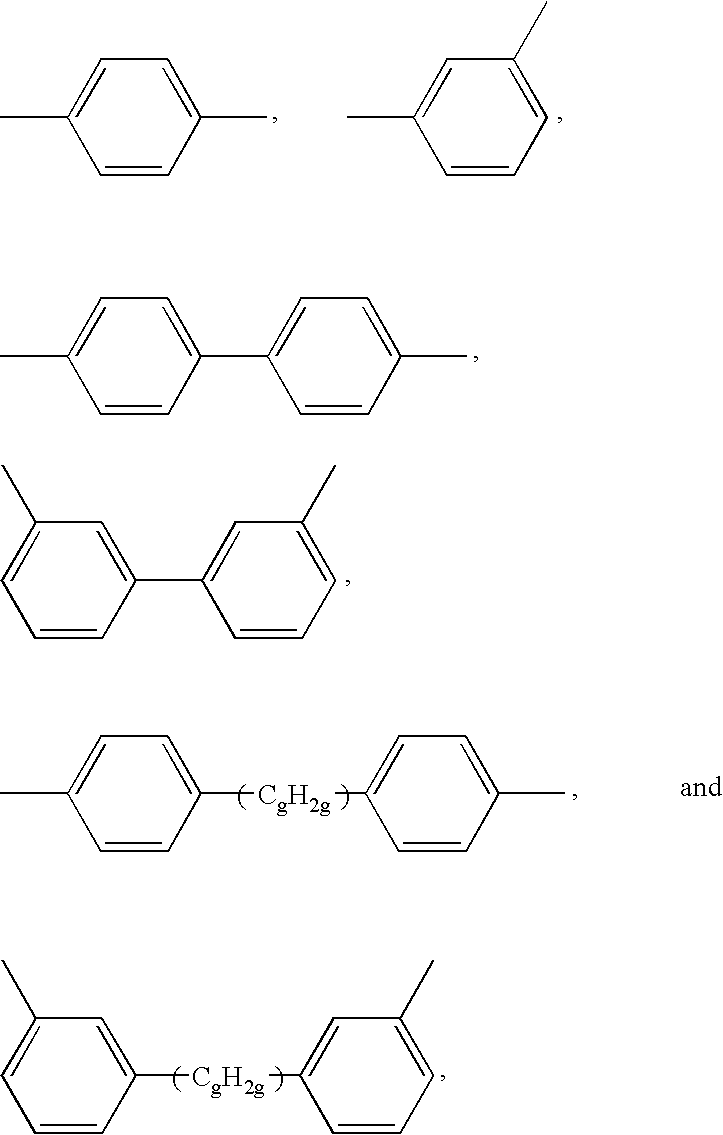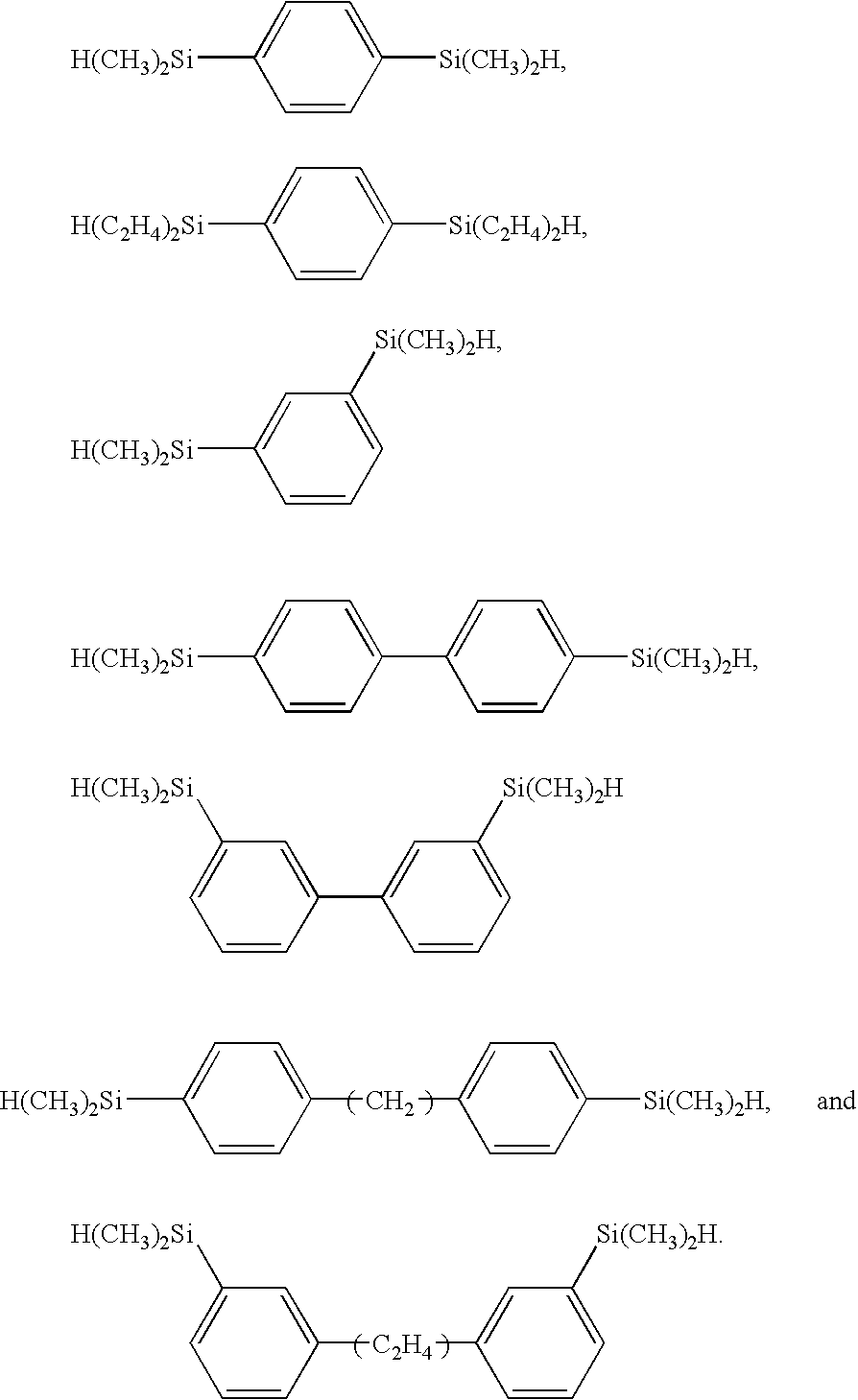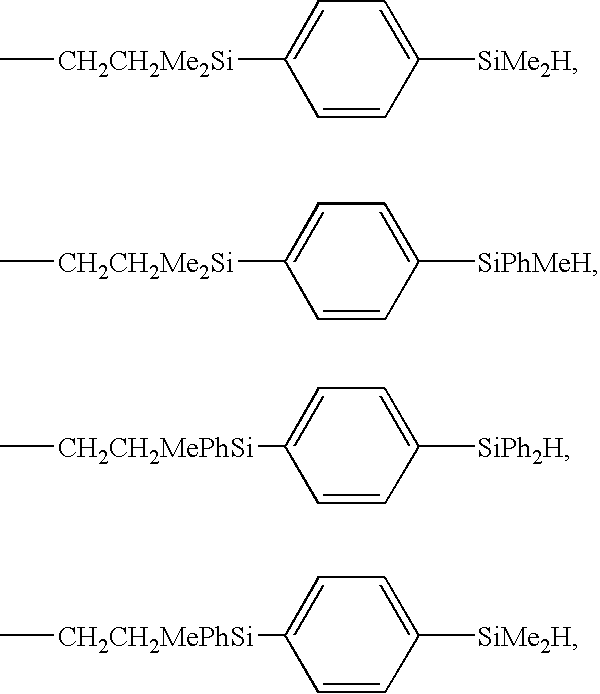Reinforced Silicone Resin Film and Method of Preparing Same
- Summary
- Abstract
- Description
- Claims
- Application Information
AI Technical Summary
Benefits of technology
Problems solved by technology
Method used
Image
Examples
example 1
[0203] This example demonstrates the preparation of the silicone resin used in Examples 4 to 7. Trimethoxyphenylsilane (200 g), tetramethyldivinyldisiloxane (38.7 g), deionized water (65.5 g), toluene (256 g), and trifluoromethanesulfonic acid (1.7 g) were combined in a 3-neck, round-bottom flask equipped with a Dean-Stark Trap and thermometer. The mixture was heated at 60 to 65° C. for 2 hours. The mixture was then heated to reflux and water and methanol were removed using a Dean-Stark trap. When the temperature of the mixture reached 80° C. and the removal of water and methanol was complete, the mixture was cooled to less than 50° C. Calcium carbonate (3.3 g) and water (about 1 g) were added to the mixture. The mixture was stirred at room temperature for 2 hours and then potassium hydroxide (0.17 g) was added to the mixture. The mixture was then heated to reflux and water was removed using a Dean-Stark trap. When the reaction temperature reached 120° C. and the removal of water wa...
example 2
[0205] This example describes the preparation of 1,4-bis(dimethylsilyl)benzene. Magnesium (84 g) and tetrahydrofuran (406 g) were combined under nitrogen in a 5-L, three-neck flask equipped with a mechanical stirrer, condenser, two addition funnels, and thermometer. 1,2-dibromoethane (10 g) was added to the mixture and the contents of the flask were heated to 50 to 60° C. Tetrahydrofuran (THF, 200 mL) and a solution of 1,2-dibromobenzene (270 g) in THF (526 g) were sequentially added to the mixture, the latter in a drop-wise manner. After about twenty minutes, heating was discontinued and the remainder of the 1,2-dibromobenzene was added over a period of about 1.5 hours at such a rate as to maintain a gentle reflux. During the addition, THF was periodically added to maintain a reaction temperature less than about 65° C. After the addition of the 1,2-dibromobenzene was complete, THF (500 mL) was added to the flask and the mixture was heated at 65° C. for 5 hours. Heating was disconti...
example 3
[0207] The resin solution of Example 1 was mixed with 1,4-bis(dimethylsilyl)benzene, the relative amounts of the two ingredients sufficient to achieve a mole ratio of silicon-bonded hydrogen atoms to silicon-bonded vinyl groups (SiH / SiVi) of 1.1:1, as determined by 29Si NMR and 13C NMR. The mixture was heated at 80° C. under a pressure of 5 mmHg (667 Pa) to remove the toluene. Then, a small amount of 1,4-bis(dimethylsilyl)benzene was added to the mixture to restore the mole ratio SiH / SiVi to 1.1:1. To the mixture was added 0.5% w / w, based on the weight of the resin, of a platinum catalyst containing 1000 ppm of platinum. The catalyst was prepared by treating a platinum(0) complex of 1,1,3,3-tetramethyldisiloxane in the presence of a large molar excess of 1,1,3,3-tetramethyldisiloxane, with triphenylphosphine to achieve a mole ratio of triphenylphosphine to platinum of about 4:1.
PUM
| Property | Measurement | Unit |
|---|---|---|
| Temperature | aaaaa | aaaaa |
| Fraction | aaaaa | aaaaa |
| Fraction | aaaaa | aaaaa |
Abstract
Description
Claims
Application Information
 Login to View More
Login to View More - R&D
- Intellectual Property
- Life Sciences
- Materials
- Tech Scout
- Unparalleled Data Quality
- Higher Quality Content
- 60% Fewer Hallucinations
Browse by: Latest US Patents, China's latest patents, Technical Efficacy Thesaurus, Application Domain, Technology Topic, Popular Technical Reports.
© 2025 PatSnap. All rights reserved.Legal|Privacy policy|Modern Slavery Act Transparency Statement|Sitemap|About US| Contact US: help@patsnap.com



